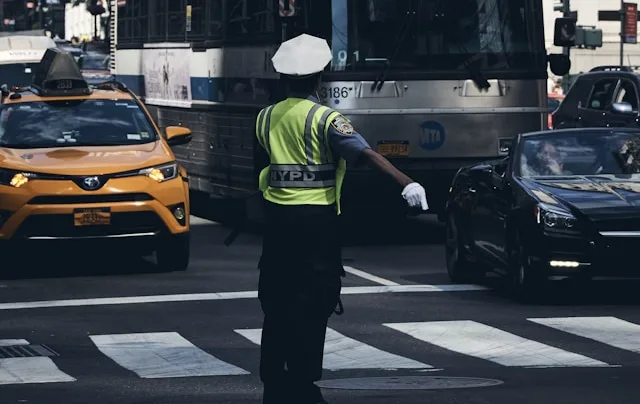The AA urges the Home Secretary to add 1,000 traffic officers to address rising road safety concerns and curb broader criminal activity, following a notable drop in traffic police numbers and a public survey indicating a high need for increased enforcement
In a compelling call to action, the Automobile Association (AA) has proposed the recruitment of 1,000 additional traffic police officers. This request comes amid growing concerns over road safety and the broader impact of traffic enforcement on crime rates. The AA’s recommendation highlights a significant drop in traffic officers over recent years and emphasizes the need for increased policing to deter both road and general crime.
The AA’s push follows an analysis of police workforce statistics released by the Home Office, which revealed a sharp decline in traffic officers from 5,237 in March 2016 to just 4,215 by March 2024. This reduction has coincided with a surge in public perception that careless driving is going unchecked. According to a recent survey of over 11,000 drivers, more than half believe that a lack of police presence allows offenders to evade consequences for dangerous driving behaviours. Among these are the use of handheld phones, drug driving, and not wearing seat belts—all of which are perceived as less likely to be enforced due to the diminished police presence.
Embed from Getty ImagesThe AA’s proposal aims to address not only road safety but also to tackle broader issues of crime linked to road activities. The organization argues that increased traffic policing would help curb offences such as drug dealing, human trafficking, and vehicle theft. This view is supported by the same survey, which found that 91% of respondents believe more traffic officers would enhance community safety, while 80% feel that a larger traffic police force would reduce serious crimes.
Jack Cousens, head of roads policy at the AA, stressed that a visible police presence is essential for maintaining road safety and deterring crime. He pointed out that routine stops by traffic officers often lead to the discovery of other criminal activities, such as stolen goods, which cameras alone cannot address. He argues that investing in more traffic officers is crucial for both safer roads and neighbourhoods.
Cousens’ remarks reflect a broader belief that increased policing can act as a deterrent against both road-related and general criminal activities. The AA’s call for action aligns with public sentiment, showing a clear demand for improved enforcement to protect both road users and communities.
Analysis
Political Perspective The AA’s call for additional traffic officers intersects significantly with current political discourse surrounding public safety and policing. The Labour Party had previously pledged to recruit thousands of new police officers to address neighborhood crime, and the AA’s proposal to allocate 1,000 of these positions to traffic enforcement underscores a pressing need within this framework. This request may influence how political parties prioritize and allocate resources in future budgets, potentially reshaping their platforms as they address voter concerns about both road safety and broader crime prevention.
The government’s response to the AA’s proposal could signal its commitment to addressing public safety issues comprehensively. If the government adopts the AA’s recommendations, it could lead to political gains for parties that align with public demands for increased police presence and enhanced road safety measures.
Social Perspective The AA’s proposal reflects and amplifies ongoing societal debates about safety and enforcement. With public surveys indicating a lack of confidence in current policing levels, the call for more traffic officers highlights a broader social concern about the effectiveness of law enforcement in maintaining order and ensuring public safety. The demand for increased policing mirrors societal anxieties about crime and the perceived ineffectiveness of existing measures.
Moreover, the survey’s findings suggest a growing awareness among the public of the interconnectedness of traffic enforcement and broader criminal activities. This awareness may lead to increased public support for measures that bridge these areas, promoting a more integrated approach to law enforcement.
Racial Perspective While the AA’s proposal primarily addresses road safety and crime prevention, the broader implications of increased traffic policing can have racial undertones. Historically, heightened policing in certain communities has raised concerns about racial profiling and disproportionate enforcement. The AA’s call for more traffic officers could lead to renewed discussions about the balance between increased enforcement and the potential for heightened scrutiny of marginalized groups.
Ensuring that any expansion in traffic policing is accompanied by measures to prevent discriminatory practices will be crucial in addressing these concerns and maintaining community trust.
Gender Perspective The proposal to increase traffic officers may also intersect with gender issues, particularly in terms of road safety and enforcement. Female drivers, for instance, have reported higher levels of concern about road safety and the enforcement of driving regulations. Increasing the number of traffic officers could address these concerns by providing a more visible and reliable enforcement presence, potentially enhancing safety for all road users, including women.
Economic Perspective Economically, the AA’s proposal could have significant implications. The recruitment of 1,000 additional traffic officers would involve substantial investment, but the potential benefits include reduced costs associated with traffic accidents and crimes linked to road use. Improved road safety could lead to lower insurance premiums and reduced healthcare costs related to traffic injuries. Additionally, more effective enforcement could reduce losses from crimes such as vehicle theft, contributing to overall economic savings.
The proposed increase in traffic officers also reflects a broader economic consideration of public safety investments. By addressing both road safety and broader crime, the initiative could potentially yield long-term economic benefits through enhanced community safety and reduced crime-related costs.
